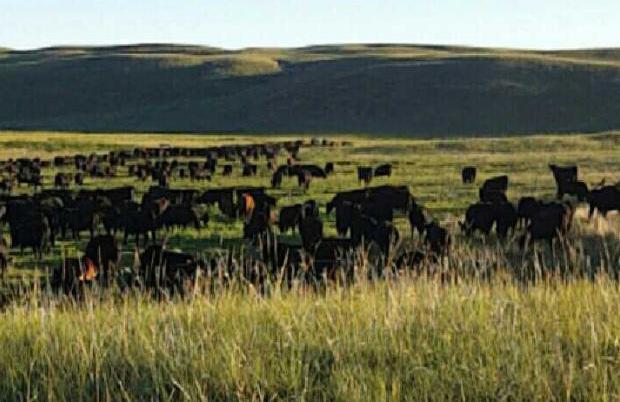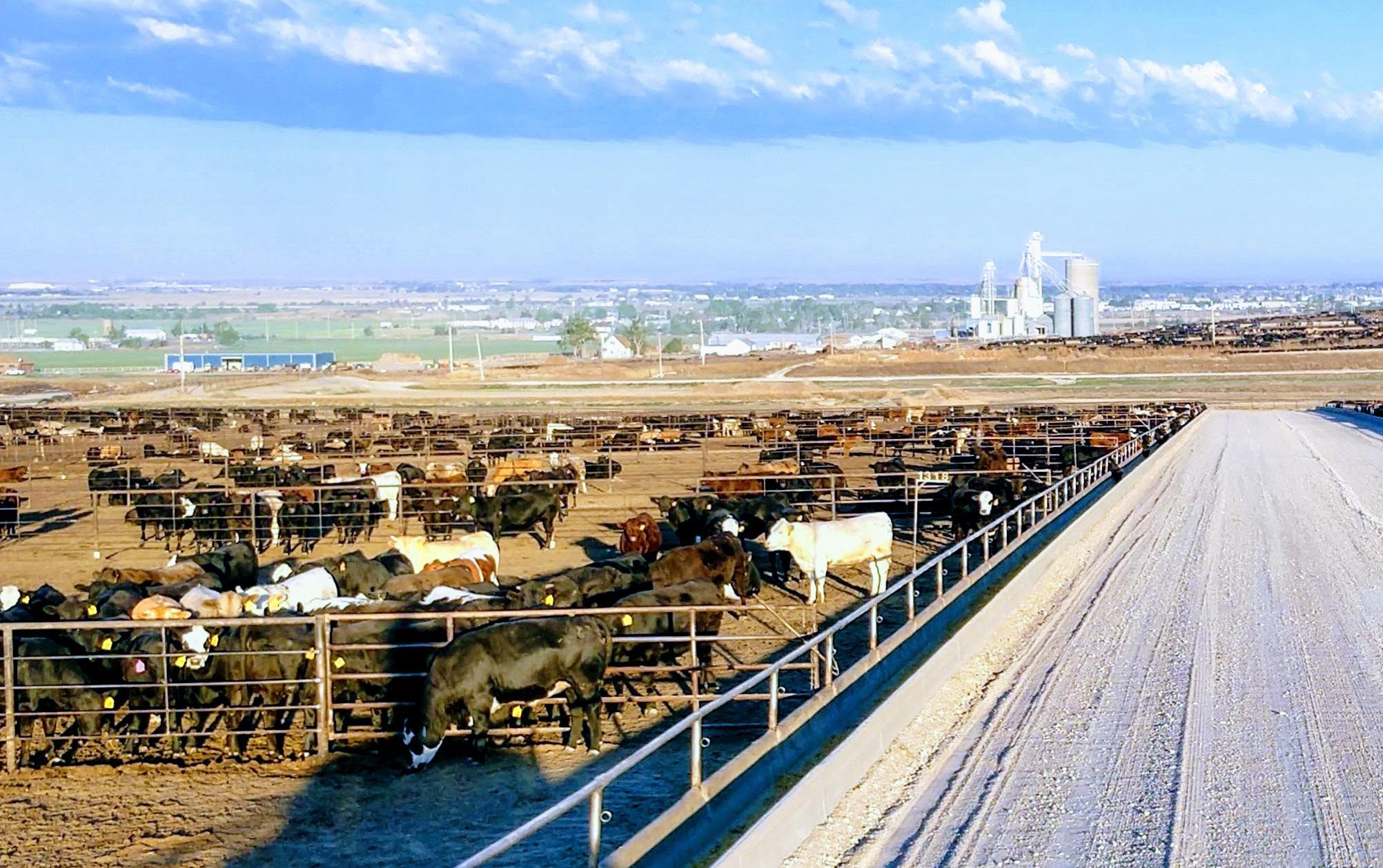
8 minute read
YOU CAN’T AVOID SHIPPING STRESS.
YOU CAN OUT SMART IT.
Protect your calves against bovine respiratory disease (BRD) with Zactran® (gamithromycin).
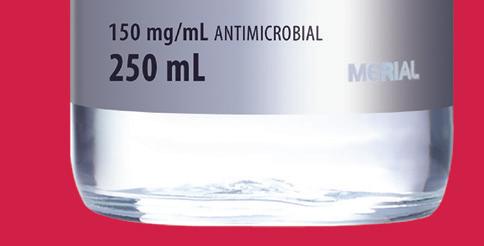
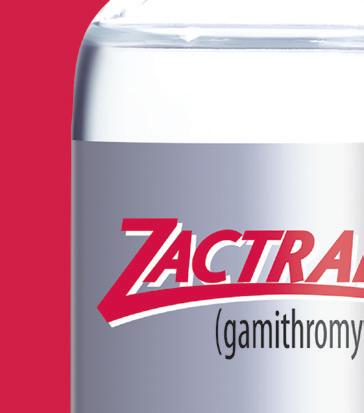

Stress can leave your cattle susceptible to performance-robbing pneumonia. With ZACTRAN, you get a potent combination of six factors that helps you protect the genetic potential of your calves – and your profitability. Get the facts to see what makes ZACTRAN the smart choice. ZACTRAN.com





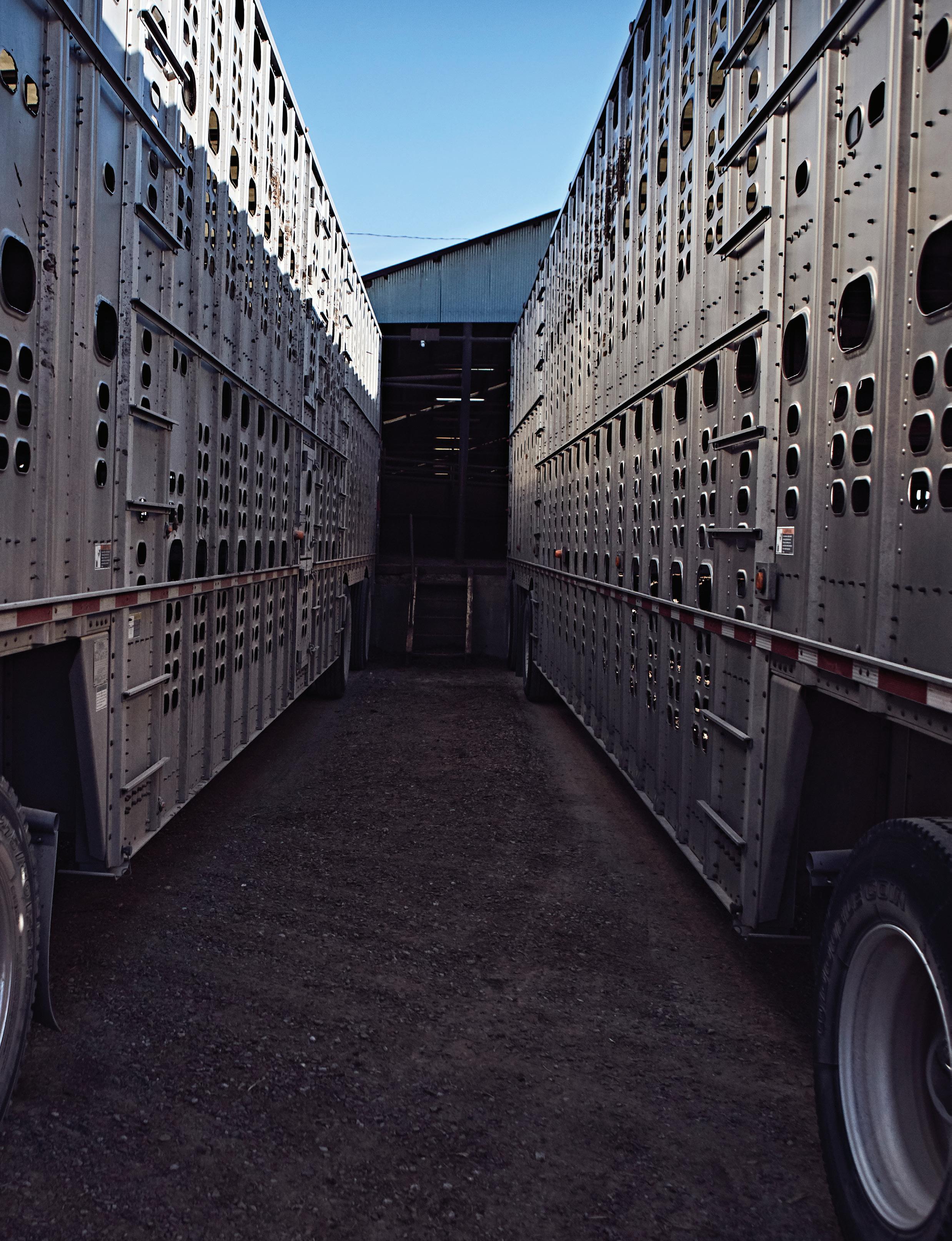
Important Safety Information: For use in cattle only. Do not treat cattle within 35 days of slaughter. Because a discard time in milk has not been established, do not use in female dairy cattle 20 months of age or older, or in calves to be processed for veal. The effects of ZACTRAN on bovine reproductive performance, pregnancy and lactation have not been determined. Subcutaneous injection may cause a transient local tissue reaction in some cattle that may result in trim loss of edible tissues at slaughter. NOT FOR USE IN HUMANS. KEEP OUT OF REACH OF CHILDREN.
THE SMART CHOICE
1 2 3 4 5 6
Susceptibility
Speed
Site of infection


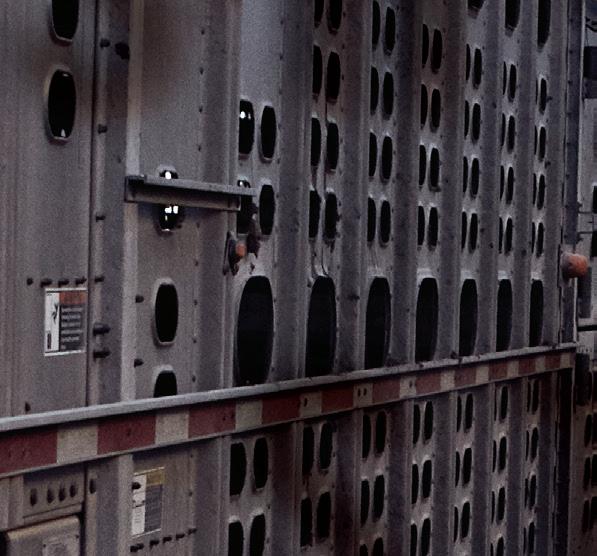
Staying power
Safety
Saves money
150 mg/mL ANTIMICROBIAL
NADA 141-328, Approved by FDA
For subcutaneous injection in beef and non-lactating dairy cattle only. Not for use in female dairy cattle 20 months of age or older or in calves to be processed for veal.
Caution: Federal (USA) law restricts this drug to use by or on the order of a licensed veterinarian.
READ ENTIRE BROCHURE CAREFULLY BEFORE USING THIS PRODUCT. INDICATIONS
ZACTRAN is indicated for the treatment of bovine respiratory disease (BRD) associated with Mannheimia haemolytica, Pasteurella multocida, Histophilus somni and Mycoplasma bovis in beef and non-lactating dairy cattle. ZACTRAN is also indicated for the control of respiratory disease in beef and non-lactating dairy cattle at high risk of developing BRD associated with Mannheimia haemolytica and Pasteurella multocida
CONTRAINDICATIONS
As with all drugs, the use of ZACTRAN is contraindicated in animals previously found to be hypersensitive to this drug.
WARNING: FOR USE IN CATTLE ONLY. NOT FOR USE IN HUMANS. KEEP THIS AND ALL DRUGS OUT OF REACH OF CHILDREN. NOT FOR USE IN CHICKENS OR TURKEYS.
The material safety data sheet (MSDS) contains more detailed occupational safety information. To report adverse effects, obtain an MSDS or for assistance, contact Merial at 1-888-637-4251.
RESIDUE WARNINGS: Do not treat cattle within 35 days of slaughter. Because a discard time in milk has not been established, do not use in female dairy cattle 20 months of age or older. A withdrawal period has not been established for this product in pre-ruminating calves. Do not use in calves to be processed for veal.
PRECAUTIONS
The effects of ZACTRAN on bovine reproductive performance, pregnancy, and lactation have not been determined. Subcutaneous injection of ZACTRAN may cause a transient local tissue reaction in some cattle that may result in trim loss of edible tissues at slaughter.
Adverse Reactions
Transient animal discomfort and mild to moderate injection site swelling may be seen in cattle treated with ZACTRAN.
Effectiveness
The effectiveness of ZACTRAN for the treatment of BRD associated with Mannheimia haemolytica, Pasteurella multocida and Histophilus somni was demonstrated in a field study conducted at four geographic locations in the United States. A total of 497 cattle exhibiting clinical signs of BRD were enrolled in the study. Cattle were administered ZACTRAN (6 mg/kg BW) or an equivalent volume of sterile saline as a subcutaneous injection once on Day 0. Cattle were observed daily for clinical signs of BRD and were evaluated for clinical success on Day 10. The percentage of successes in cattle treated with ZACTRAN (58%) was statistically significantly higher (p<0.05) than the percentage of successes in the cattle treated with saline (19%).
The effectiveness of ZACTRAN for the treatment of BRD associated with M. bovis was demonstrated independently at two U.S. study sites. A total of 502 cattle exhibiting clinical signs of BRD were enrolled in the studies. Cattle were administered ZACTRAN (6 mg/kg BW) or an equivalent volume of sterile saline as a subcutaneous injection once on Day 0. At each site, the percentage of successes in cattle treated with ZACTRAN on Day 10 was statistically significantly higher than the percentage of successes in the cattle treated with saline (74.4% vs. 24% [p <0.001], and 67.4% vs. 46.2% [p = 0.002]). In addition, in the group of calves treated with gamithromycin that were confirmed positive for M. bovis (pre-treatment nasopharyngeal swabs), there were more calves at each site (45 of 57 calves, and 5 of 6 calves) classified as successes than as failures.
The effectiveness of ZACTRAN for the control of respiratory disease in cattle at high risk of developing BRD associated with Mannheimia haemolytica and Pasteurella multocida was demonstrated in two independent studies conducted in the United States. A total of 467 crossbred beef cattle at high risk of developing BRD were enrolled in the study. ZACTRAN (6 mg/kg BW) or an equivalent volume of sterile saline was administered as a single subcutaneous injection within one day after arrival. Cattle were observed daily for clinical signs of BRD and were evaluated for clinical success on Day 10 post-treatment. In each of the two studies, the percentage of successes in the cattle treated with ZACTRAN (86% and 78%) was statistically significantly higher (p = 0.0019 and p = 0.0016) than the percentage of successes in the cattle treated with saline (36% and 58%).
Cover Photo Credits
We want to showcase unique photographs from our readers here! Please submit your photographs to Kelly Terrell at kelly.terrell@pacdvms.com.
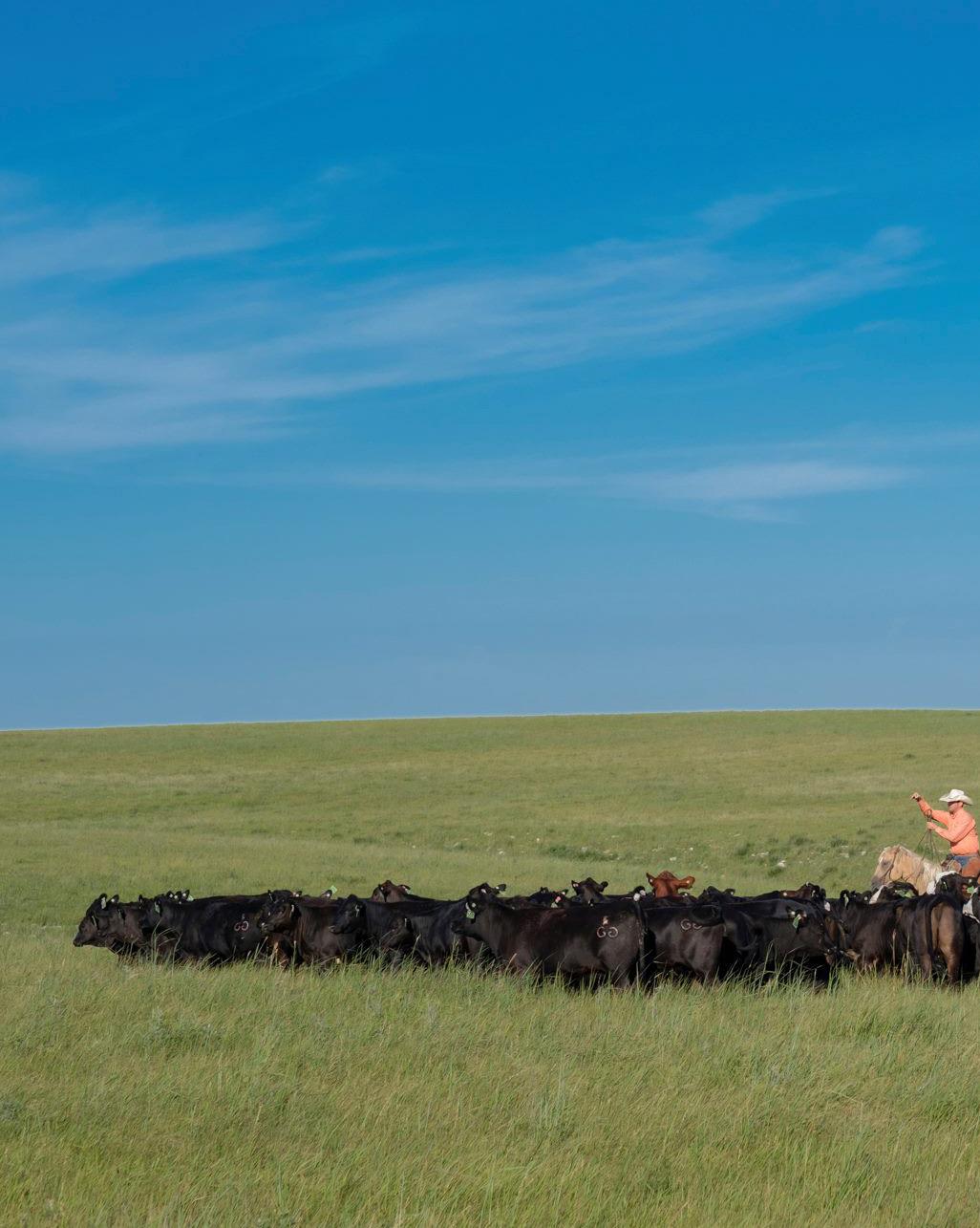
Flint Hills of Kansas
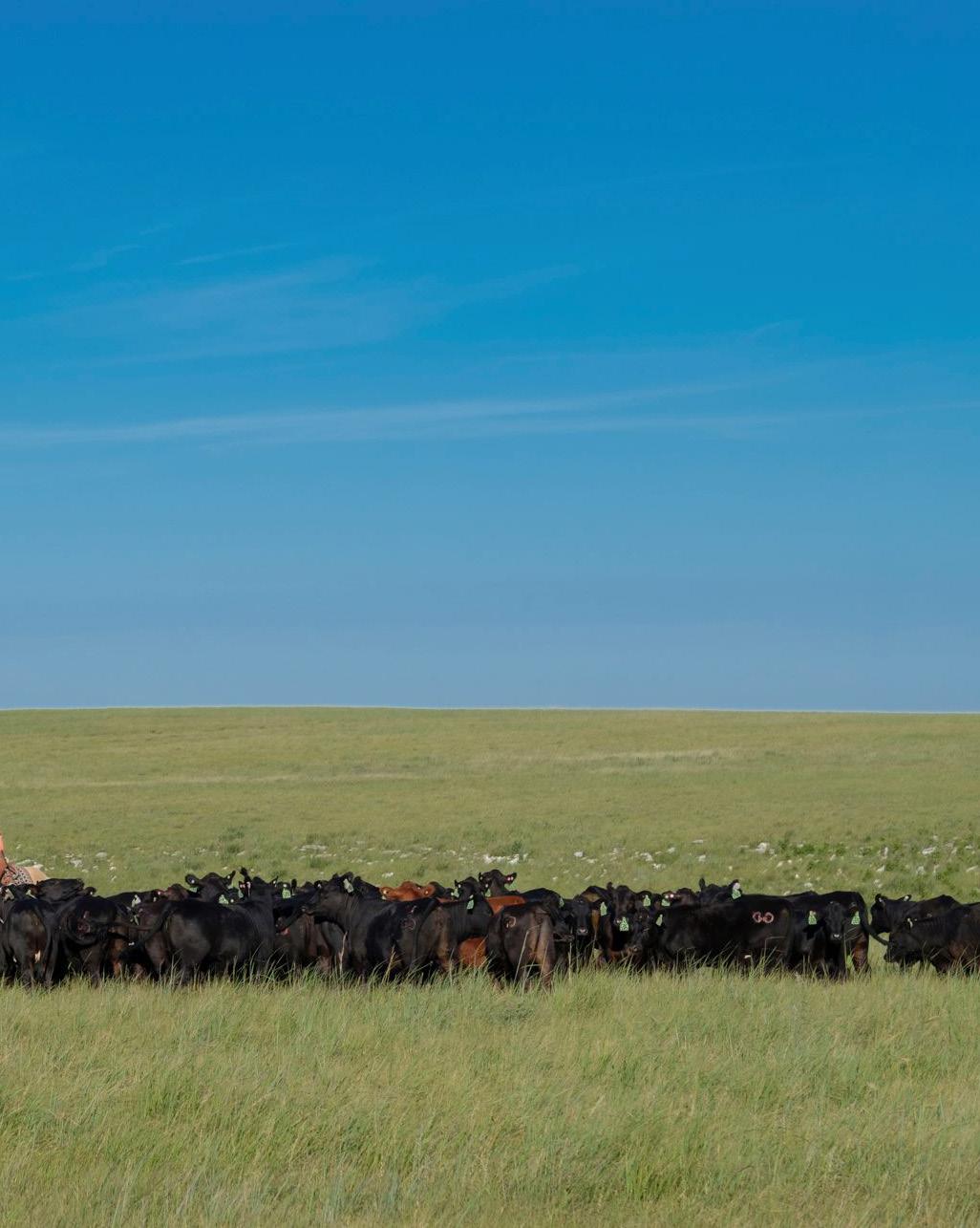
Arturo and Wrenn Pacheco
Photo credit: Scott Stebner
Welcome to the summer issue of Protein Producers. It’s an exciting time of year as days get longer, in-takes take off and calf-feds are shipping out of the yard. We look forward to these changes and look also to the challenges summer brings.
In this issue of Protein Producers, we cover summer-specific topics along with other issues impacting our industry. It is an issue that is full of information from PAC members and influencers in the industry.
Thanks to all our clients and friends who attended our April Summit meeting in Kearney, Nebraska. The theme for the meeting was “Dispelling Myths in the Cattle Industry.” To start off the meeting, Dr. Kev Sullivan and Dr. Tom Noffsinger of PAC discussed the power in leading new cattle to acclimate them to their surroundings upon arrival at the feedyard.
Dr. Kip Lukasiewicz followed up with the impact of handling at the first transition of life, just after birth, on health outcomes throughout the life of the animal. To finish up the morning, Nebraska state veterinarian Dr. Dennis Hughes discussed the significant changes made to foreign animal disease response plans.
After lunch, industry leader Dr. Mike Apley discussed myths about antibiotic use in beef production. The meeting wrapped up with Alex McKiernan providing an outside perspective of the challenges facing our industry in the coming years. Alex is the co-owner of Robinette Farms in Martel, Nebraska, a direct sales vegetable farm.
We look forward to our Oberlin, Kansas Summit meeting on July 11th and would like to invite each of you to attend.
We have an exciting line up of speakers including Samuel Cossio of Easterday Ranches; Burke Teichert; Mitch Holthus, the voice of the Kansas Chiefs; and PAC’s Dr. Kev Sullivan. It should be a great program focused on providing tools to make our caregiver teams more well-rounded and successful.
We are grateful for the continued opportunity to work with great clients and collaborators in a great industry. I hope this issue finds you all well and we look forward to seeing you at the Summit meeting in July.
Sincerely,
Shane Terrell DVM, PhD
Thank you to all those contributing multiple stories and insights to Protein Producers.
Dave Rethorst, DVM
A native of southwest Kansas and a product of the area’s ranching lifestyle, Dr. Rethorst attended Kansas State University where he received a BS in Agriculture in addition to his DVM. Upon graduation in 1978, he joined a four veterinarian mixed practice in Hastings, NE. After 10 years in this practice, he started a predominately beef cattle practice located in Red Cloud, NE. After selling the practice in 2010, he spent 2 ½ years in Oakley, KS working primarily in the beef portion of that practice. Dr. Rethorst spent 4 years as the Director of Outreach for the Beef Cattle Institute which is part of the Kansas State University College of Veterinary Medicine before returning to private practice in 2017. He is currently part of Animal Health Center of Marion County which has clinics in Marion and Herington, Kansas. After 40 years of practice, Dave remains passionate about three things: God, family, and beef cattle production medicine. His preventative approach focuses on basic animal husbandry, especially nutrition in the cow herd, rather than more vaccine and more antibiotic.
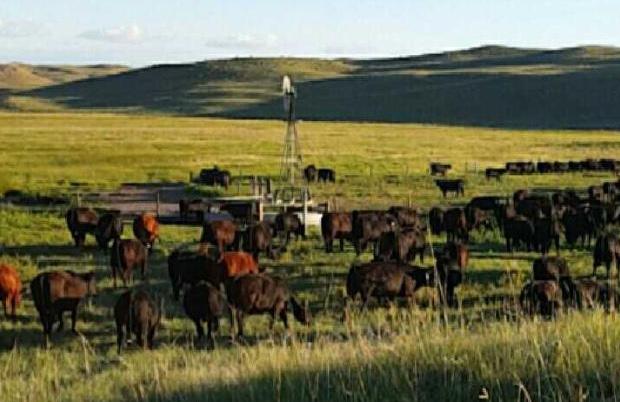
Don Close
Don Close is a Vice President and Protein Analyst with RaboResearch Food and Agribusiness. If you are interested in additional insights into the beef industry, stop in to your local Rabo AgriFinance office. You can find the closest office on www.RaboAg.com. Rabo AgriFinance is an equal opportunity provider.
Justin Axman, M.S.
Justin Axman was raised in central Kansas on his family’s farm. He is the nutrition services manager for Hi Plains Feed, a feed manufacturer in southwest Kansas. They primarily service beef and dairy cattle producers with a variety of dry and liquid feed options. In this role, he is responsible for all formulation requests, ingredient evaluation, quality control, product development, technical services, and nutritional support. These responsibilities allow for him to fulfill his passion for the livestock industry by playing an integral role in cattle production and products thereof. Justin completed his Master’s degree in Ruminant Nutrition at Kansas State University and during this time he was also the Research Assistant at the Beef Cattle Research Center. Prior to this, he received his Bachelor’s degree in Biology from Emporia State University and his Associate’s degree in Biology from Pratt Community College.
Tony Moravec, DVM
Dr. Tony Moravec is a veterinarian of 17 years who has served in private practice and consulted in industry nationally and internationally. Dr. Tony serves on the Nebraska Veterinary Medical Association Board of Directors, and is the veterinarian on the Nebraska State Board of Health. Additionally, Tony serves as Parish Council President at St. Francis Catholic Church near David City. After living in 17 addresses during 19 years of marriage to his lovely wife, Erica, they currently reside south of David City, NE with their five children. Dr. Tony is a business owner, TV personality, entrepreneur and a shameless meat eater.
Jacob Mayer, P.E.
Jacob Mayer is a Project Engineer for Settje Agri-Services & Engineering (www.settje.com) located near Raymond, NE. He is a licensed Professional Engineer and has a B.S. in Agricultural Engineering from Iowa State University and M.S. in Biological Engineering from Mississippi State University. He resides in rural Weston, NE with his wife (Katie), daughter (Kirkland), and son (Hatten). He does not wear a pocket protector and does not know how to use a slide rule.
The Pot Roast
We want to showcase the talented chefs that read our magazine. In this issue we are featuring Arturo and Wrenn Pacheco who run cattle in the Flint Hills of Kansas while also maintaining a fun and unique cooking blog which can be found at cookingwiththecowboy.com. If you have a recipe that you would like to feature in The Pot Roast section of the magazine, please email us at kelly.terrell@pacdvms.com. Our goal is to continue discovering recipes from agriculture’s finest.
Disclaimer: The views, opinions, and information expressed in this magazine are those of the authors and do not necessarily reflect Production Animal Consultation's policy or position.
